Sep 25, 2019 | Questions & Answers

Justin Combs is a fifth-year student in the International Engineering Program at the University of Arkansas. In 2018-2019, he spent a year in Germany at the University of Darmstadt and Institute of Molecular Biology. Below he discusses the import of his travel abroad experience, advice for peers, and goals after graduation.
BME: Where are you from? How far along are you in your studies at the U of A?
COMBS: I’m from Bryant, AR and I’m now a fifth-year senior at the U of A (the International Engineering Program is 5 years).
BME: When/how did you first hear about study abroad opportunities for engineers?
COMBS: I heard about some while I was in high school, but I didn’t learn much until my freshman year at the U of A.
BME: Why Germany?
COMBS: Why not Germany? Germany is renowned for great engineering and there is a lot of really interesting medical research going on over there.
BME: Where in Germany were you, and what did you accomplish (internship, study, etc.)?
COMBS: I spent the first part of the year in Darmstadt (south of Frankfurt) attending the Technical University at Darmstadt, then I moved to Mainz to complete an internship at the Institute of Molecular Biology.
BME: How has study abroad aided your knowledge of biomedical engineering?
COMBS: It was a great opportunity to experience other cultures around Europe, which I think will help me to assess and meet needs of other cultures and people around the world when designing devices or products in the future.
BME: Any advice for other engineering students similarly looking to study abroad?
COMBS: If you ever have the opportunity, I highly recommend it and that you embrace the culture of whatever country you’re in. Experiencing other cultures and peoples can only help to broaden your view of the world.
BME: Any plans after graduation?
COMBS: I want to go into industry for a couple of years, then apply to medical school.
Sep 23, 2019 | Internships
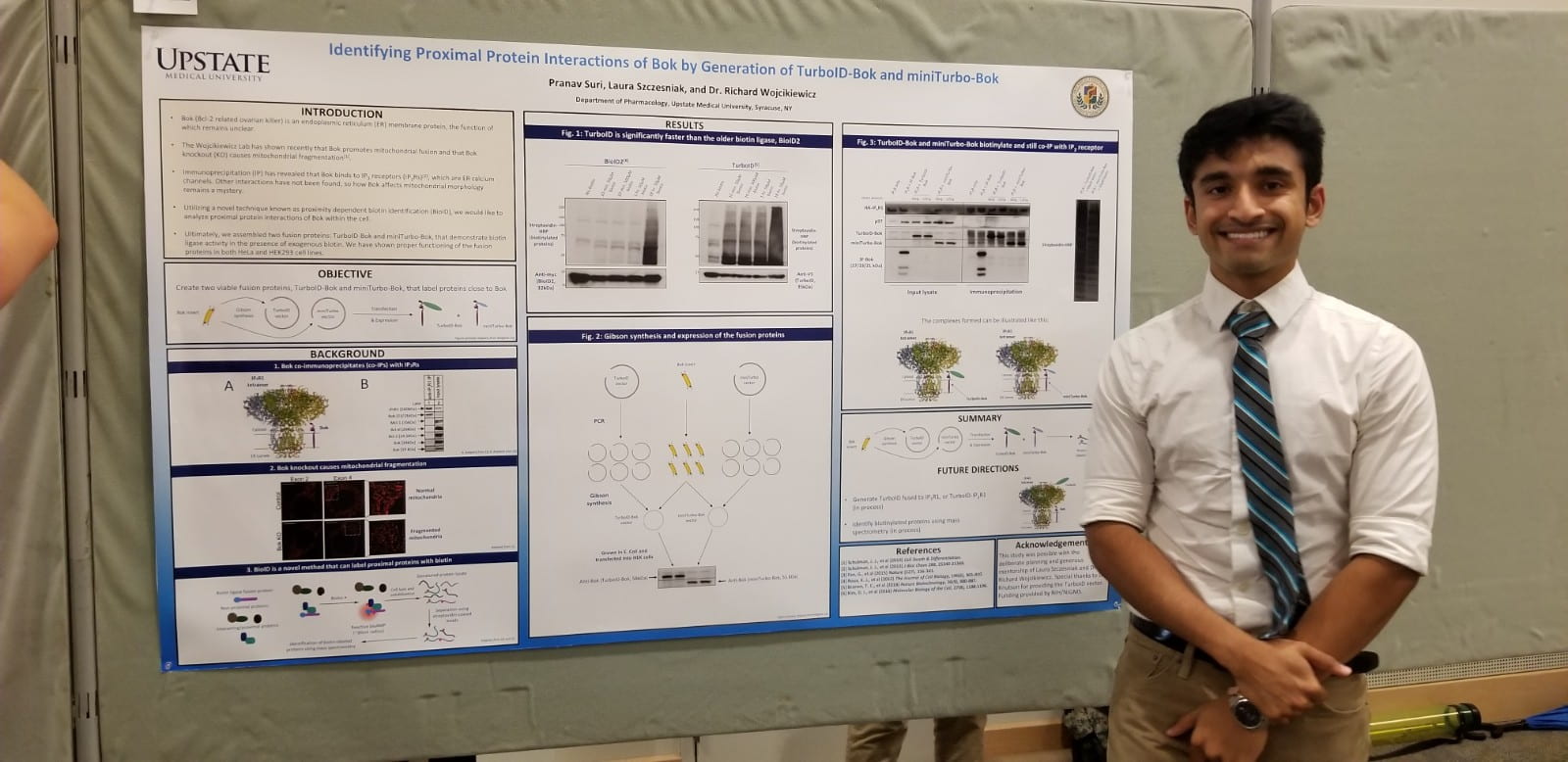
Pranav Suri is a biomedical engineering honors student at the University of Arkansas. During the summer of 2019, he participated in the Summer Undergraduate Research Fellowship – Physician Scientist Program at SUNY Upstate Medical University in Syracuse, New York. Below, he describes research experience, med-school shadowing, and solidified ambitions post-graduation.
I vividly remember the morning I received the email inviting me to the SURF-PS program at Upstate Medical. I was absolutely elated, to say the least. I never thought I’d have the opportunity to research under an MD/PhD student, shadow physicians, and work alongside some talented, driven students also interested in biomedical sciences. My project resulted in the generation of two new fusion proteins, made by linking one protein to the N-terminus of another. I learned some valuable experimental design skills, and I consider myself incredibly fortunate to have had such an opportunity. In the future, I intend to mentor other talented young students and pass on all that I have learned.
I was placed in Dr. Richard Wojcikiewicz’s lab in the pharmacology department, and after being shown around for the first week and learning the ropes, I began work. I got to the lab every morning at around 8 AM, and, in the beginning, while it was pretty overwhelming, I learned a lot not only about conducting research, but also about how to operate a lab. Meetings and staying up to date with the lab’s aims kept me focused and made me feel that I was part of a team working towards the same goal.
My first experiment was the transfection of human embryonic kidney (HEK) cells with green fluorescent protein. I imagine the other lab members had done this many times before, but when I saw my cells fluoresce for the first time under the microscope, I was absolutely mind blown. Each subsequent experiment was a little more difficult than the last, and I learned to record everything. The coolest experiment I did was a Gibson synthesis, which is just another way of ligating two DNA fragments into one large vector that can be grown in bacteria and then transfected into human cells. These new DNA vectors transcribed and translated into my new proteins. I completed my project before the program ended, and, during the last few weeks, my mentor let me conduct research independently! I was able to design experiments and carry them out myself, all while maintaining my own cell lines and reagents.
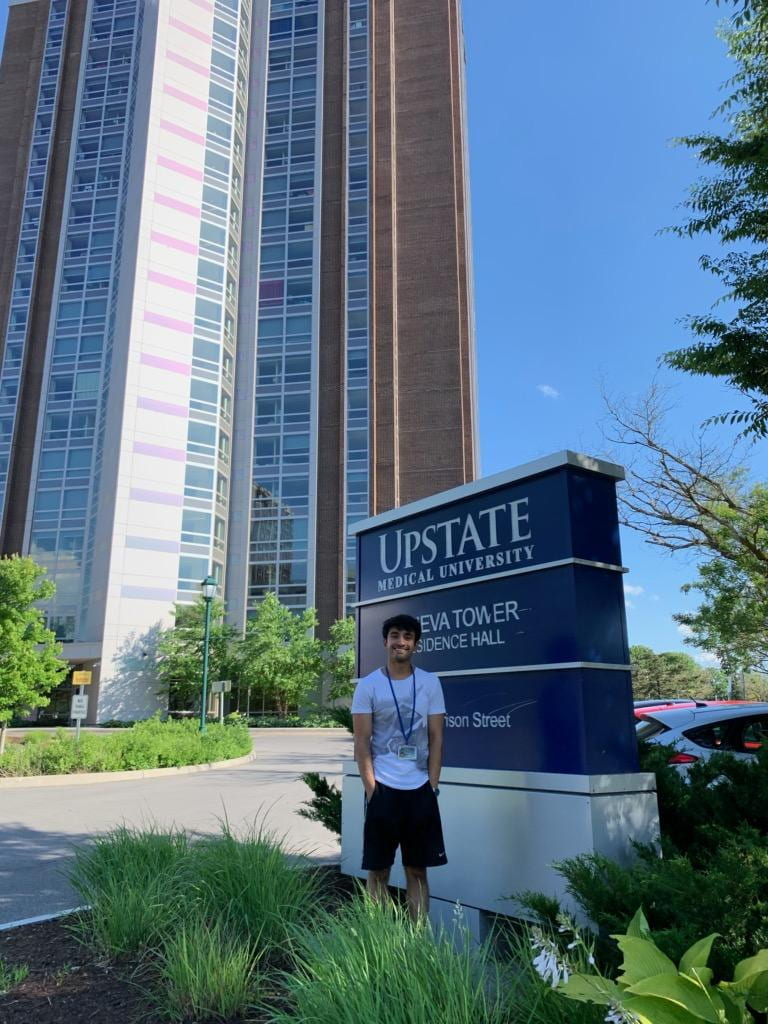
In addition to research, I got to shadow an orthopedic surgeon as part of the physician-scientist track. I observed as he consulted patients in the clinic, and as he performed complicated surgeries such as total knee arthroplasties and lipoma excisions. I also got to speak with residents, medical students, and senior physicians about their paths through medical school and how they eventually got to where they are now. My experience only reinforced why I chose to go to medical school, and I gave me an invaluable outlook of what it was like at every stage of the medical journey: student, resident, and physician.
Throughout the program, I met once a week with a journal club, in which each member would present an article of his/her choosing. The member would present the paper, and then we discussed the paper’s strengths, weaknesses, theories, and further directions. This sounds so boring, but it was actually kind of awesome. I learned how to critically read journal papers and understand what makes a paper strong and weak. I learned about the process of publishing an article in a reputable journal, and how to condense information from my research into something that is presentable to an audience.
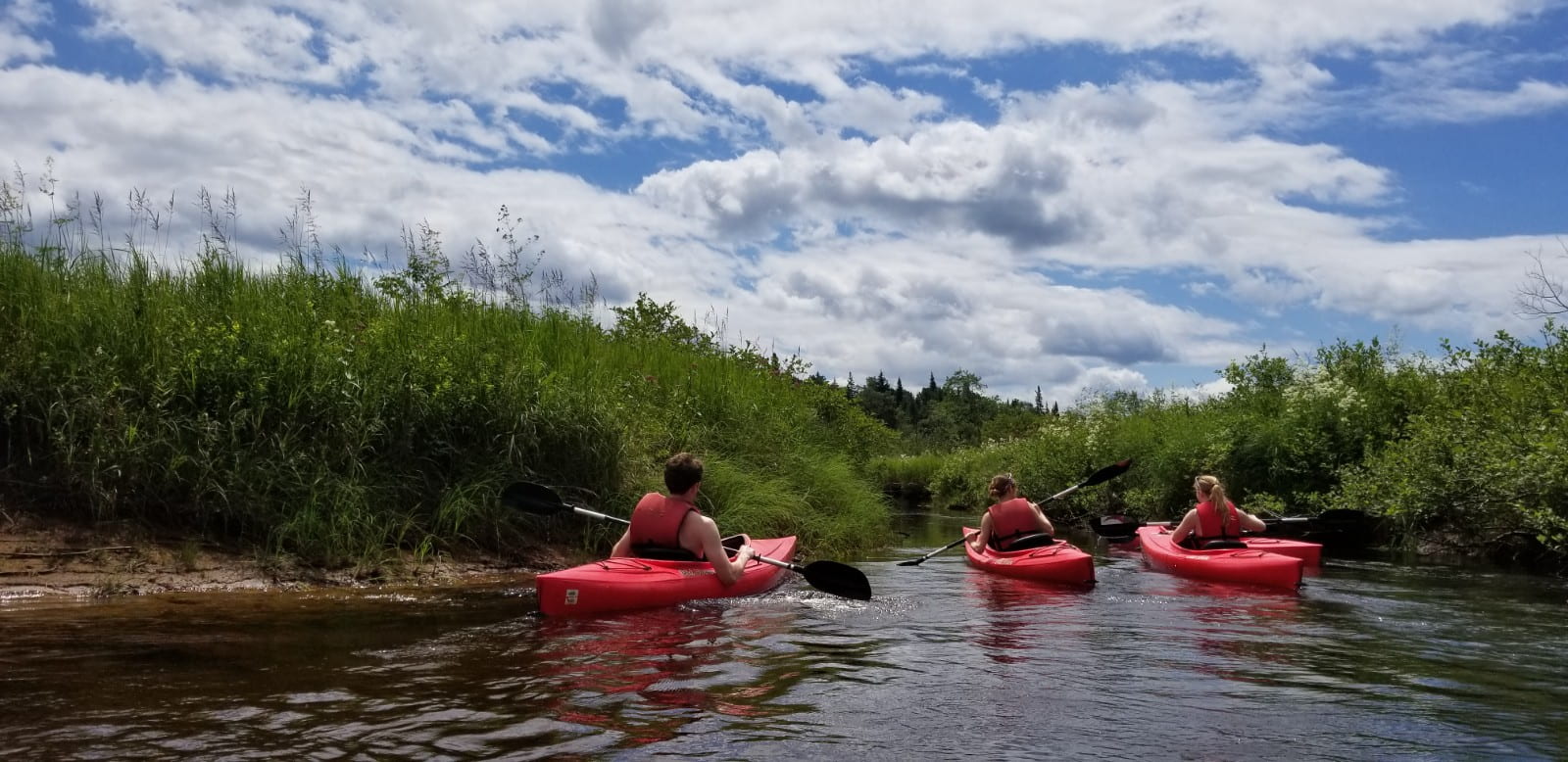
On the weekends, I got to explore Syracuse and bond with all of the other students there. We went hiking in Ithaca, swimming in the lakes around the area, and even kayaking along a stream. Overall, my experience at SUNY Upstate was absolutely amazing. While I learned a lot, I also learned about the important balance between work and life. The program was demanding, but it was always important to make time to relax with a walk in the park or movie with friends. I’d highly recommend the program to all of our students.
Sep 18, 2019 | Internships
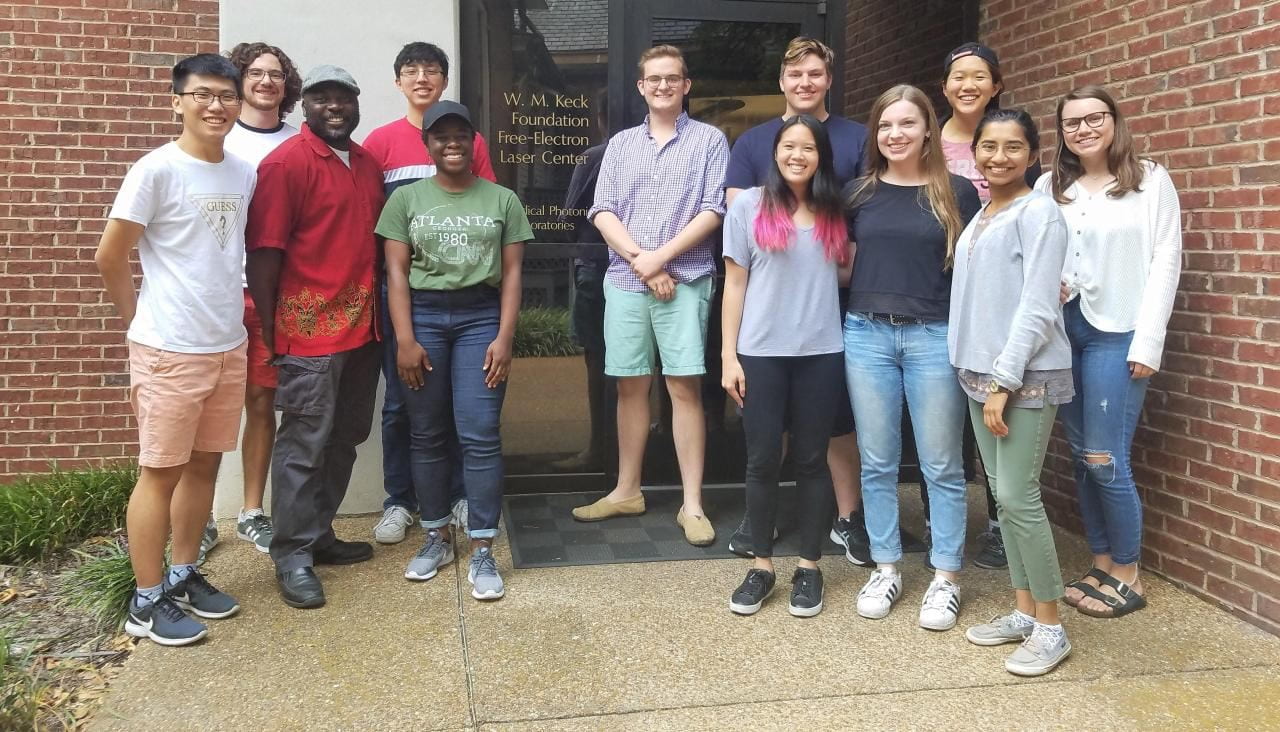
Gianna Busch is a third-year biomedical engineering student. This past summer she acted as a research intern for the Vanderbilt Biophotonics Center. Below she discusses departmental guidance, research experience, and aspirations to pursue a PhD post-graduation.
I have been planning to go graduate school since I was a freshman in college. Both of my parents have engineering degrees, and my mother went on to get her masters. However, I was only planning to get my masters degree. After spending my summer working as a research intern in the Vanderbilt Biophotonics Center, my plans for my future changed.
I first heard about this opportunity through Dr. Rao’s weekly emails to the BME Department. I had been on the hunt for a summer opportunity – either an internship or a research program – and I still wasn’t sure of my plans so I decided to just go ahead and apply. I ended up getting into the program and I was very excited! However, although I work in Dr. Quinn’s lab and many of our projects involve multiphoton microscopy, I had never actually worked on those parts of the projects and I was very unfamiliar with Biophotonics in general. I was definitely a bit nervous moving to Nashville and starting my program, but I was also very excited to learn more about a new field of biomedical engineering and hopefully get some more insight into what I wanted to do with the rest of my life.
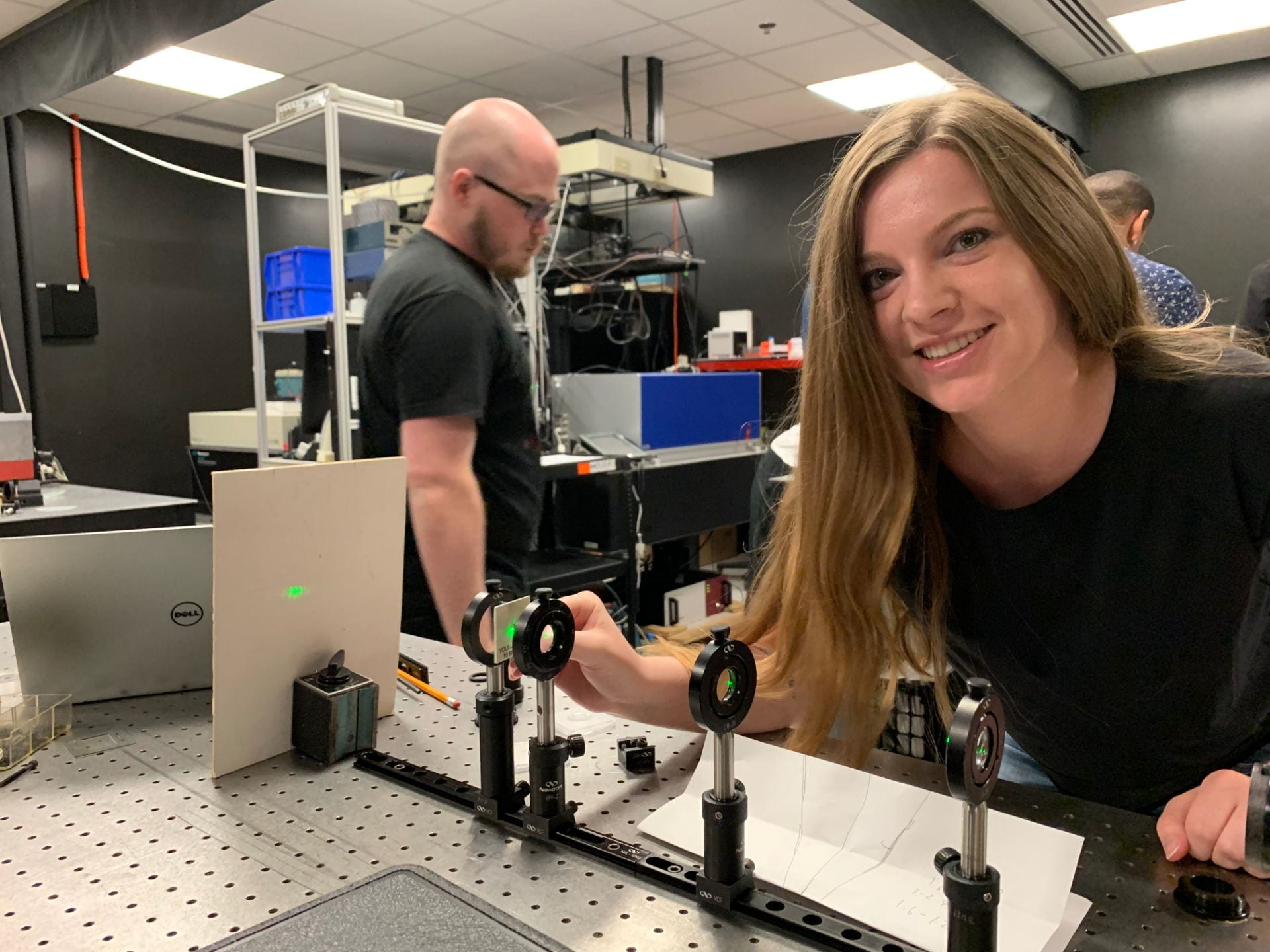
At the Vanderbilt Biophotonics Center, I worked in the lab of Dr. Anita Mahadevan-Jansen with one of her grad students, Sean Fitzgerald. Her lab’s main focus is applying optical techniques for use in diagnosis and neuromodulation. The three main research areas of her lab are optical diagnostics, neurophotonics, and image-guided surgical techniques. I was assigned to work on the Scanned Oblique Plane Illumination (SOPi) microscope. The Biophotonics Center is building the SOPi microscope with the assistance of the Kozorovitskiy Lab at Northwestern University, where it was first developed. Eventually, the Vanderbilt SOPi will be used in a similar way to the Multiphoton Microscope here at the University of Arkansas, with other lab groups and researchers able to come and image their samples with it. While I was at Vanderbilt, the microscope was not yet ready for use by other researchers. However, I spent the summer learning how it worked, practicing how to image with it, and conducting image analysis on some of our test samples. Although I love my research and lab at the University of Arkansas, it was valuable to experience different projects and technologies, as well as working under a different PI in a different lab culture.
In addition to the research aspect of the program, the Biophotonics Center also organized weekly professional development sessions for all of the research environments. We covered topics ranging from financial responsibility to applying for the NSF Graduate Research Fellowship to what to expect from life as a grad student. It was through these sessions that I learned about the job opportunities available to me if I decided to pursue a Ph.D. Although I was already planning to go into Research & Development after college, I learned about how earning a Ph.D. would enable you to successfully manage projects from start to finish and lead teams of other people. I am now planning to earn my Ph.D. in biomedical engineering after I graduate from the University of Arkansas. I absolutely love getting to be a part of biomedical research, and I am looking forward to pursuing a career path that will allow me to take on more of a leading role in my projects. I plan to use the rest of my time at the University of Arkansas to further my research, determine what I would like to specialize in for my graduate research, and hopefully participate in another research program next summer to get an even better idea of the opportunities available to me.






